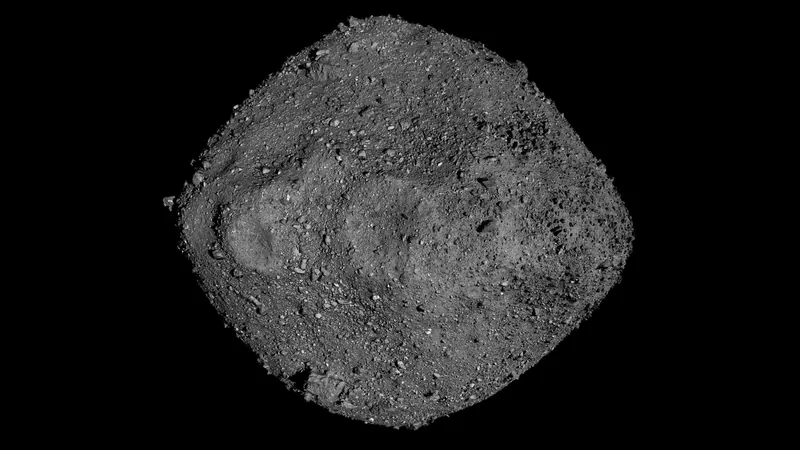
Asteroid Bennu: A Time Capsule of Ancient Stardust That Predates the Solar System
2025-09-02
Author: Sarah
Asteroid Bennu Reveals Cosmic Secrets
In a groundbreaking discovery, scientists analyzing samples from asteroid Bennu have uncovered a treasure trove of materials, some of which are older than our very own solar system. These findings, recently outlined in three significant studies, illustrate how Bennu serves as a remarkable time capsule from the early days of our cosmic neighborhood.
The OSIRIS-REx Mission's Stellar Findings
Collected by NASA's OSIRIS-REx spacecraft during its dramatic 2020 touchdown, the samples from Bennu contain a fascinating mix of dust from our solar system, organic molecules from interstellar space, and ancient stardust predating the sun. Pierre Haenecour from the University of Arizona, who played a vital role in analyzing these samples, called it "fascinating" to see Bennu captured remnants of material from the primordial solar system.
A Journey Through Time and Space
These minuscule grains of stardust, some smaller than a micrometer, may have journeyed vast distances before becoming part of Bennu’s parent asteroid, a colossal body shattered in a collision millions of years ago. Remarkably, some grains have endured extreme heat and water interactions, as well as multiple impact events, revealing their resilience and the dramatic history of the asteroid belt between Mars and Jupiter.
Unlocking Stellar Origins
One of the pivotal studies published in *Nature Astronomy* reveals that ice within the parent asteroid melted and reacted with cosmic dust, forming the minerals that constitute approximately 80% of Bennu. Unique grains like silicon carbide carry chemical signatures pointing to their stellar origins, which trace back to long-gone stars that we can no longer observe.
Weathering the Cosmos
Another vital piece of research showcased in *Nature Geoscience* examines how Bennu's surface has been sculpted by space weathering, which includes impacts from tiny micrometeorites and the effects of solar wind. According to the study, the asteroid's surface has experienced cosmic radiation exposure for millions of years, resulting in miniature craters and molten rock eruptions.
Expanding Our Understanding of Asteroids
Comparative analysis with samples from Japan's Hayabusa2 mission suggests a more significant role of impacts in reshaping asteroid surfaces than previously thought. Lindsay Keller from NASA emphasized that current findings indicate a much quicker pace of surface weathering on Bennu than scientists had once believed.
The Importance of Direct Sample Collection
Gathering samples directly from space is vital for understanding asteroid histories, as meteorites provide limited insights. The year-long study of Bennu allowed OSIRIS-REx to meticulously map the asteroid and its mineral composition, delivering invaluable geological context unmatched by meteorite samples.
A Historic Opportunity in Asteroid Research
As Jessica Barnes from the University of Arizona expressed, this research enables scientists to finally access the secrets of an asteroid they’ve long dreamed of visiting. The discoveries from Bennu’s samples not only deepen our understanding of asteroid formation and evolution but also illuminate the early solar system—a thrilling glimpse into our cosmic past.




 Brasil (PT)
Brasil (PT)
 Canada (EN)
Canada (EN)
 Chile (ES)
Chile (ES)
 Česko (CS)
Česko (CS)
 대한민국 (KO)
대한민국 (KO)
 España (ES)
España (ES)
 France (FR)
France (FR)
 Hong Kong (EN)
Hong Kong (EN)
 Italia (IT)
Italia (IT)
 日本 (JA)
日本 (JA)
 Magyarország (HU)
Magyarország (HU)
 Norge (NO)
Norge (NO)
 Polska (PL)
Polska (PL)
 Schweiz (DE)
Schweiz (DE)
 Singapore (EN)
Singapore (EN)
 Sverige (SV)
Sverige (SV)
 Suomi (FI)
Suomi (FI)
 Türkiye (TR)
Türkiye (TR)
 الإمارات العربية المتحدة (AR)
الإمارات العربية المتحدة (AR)